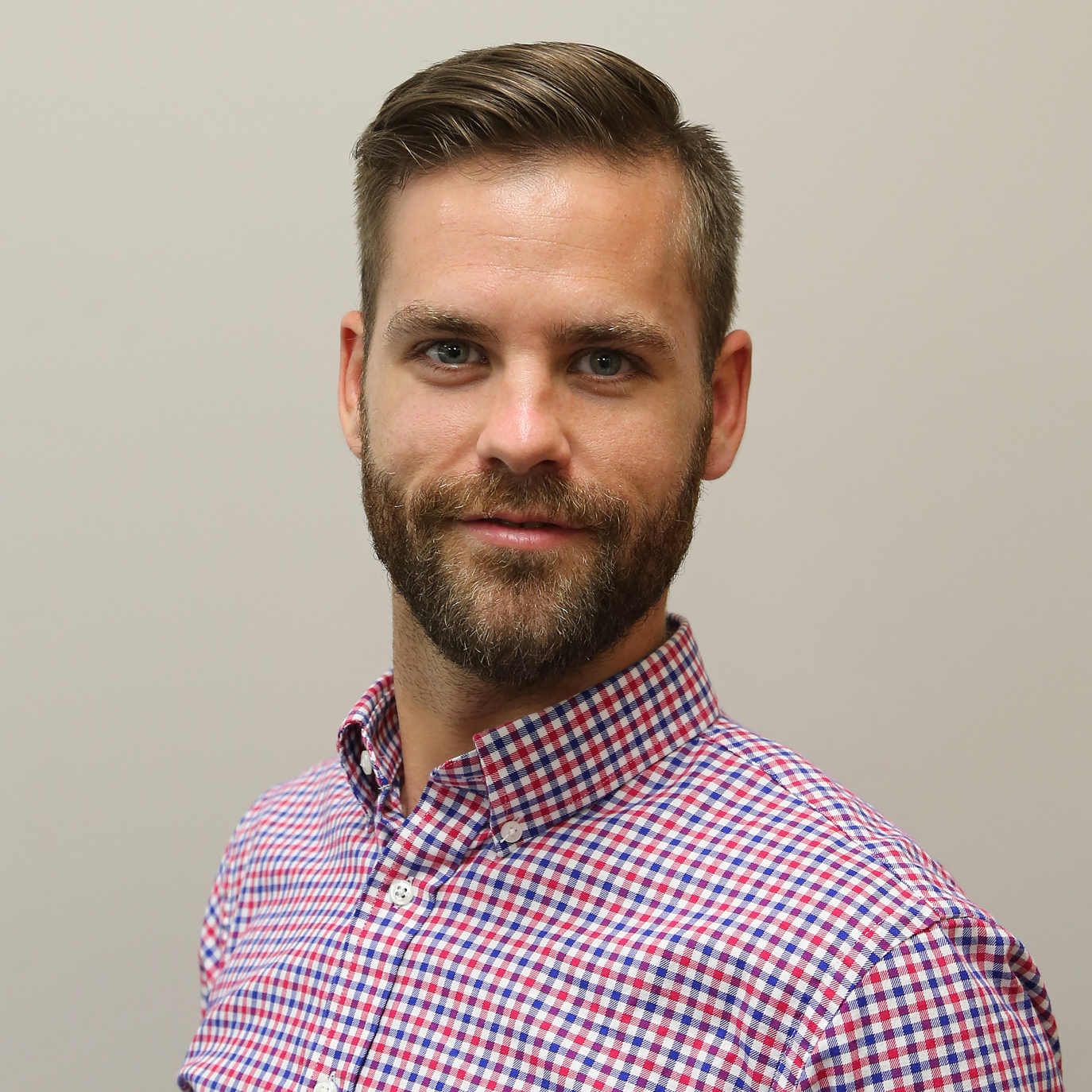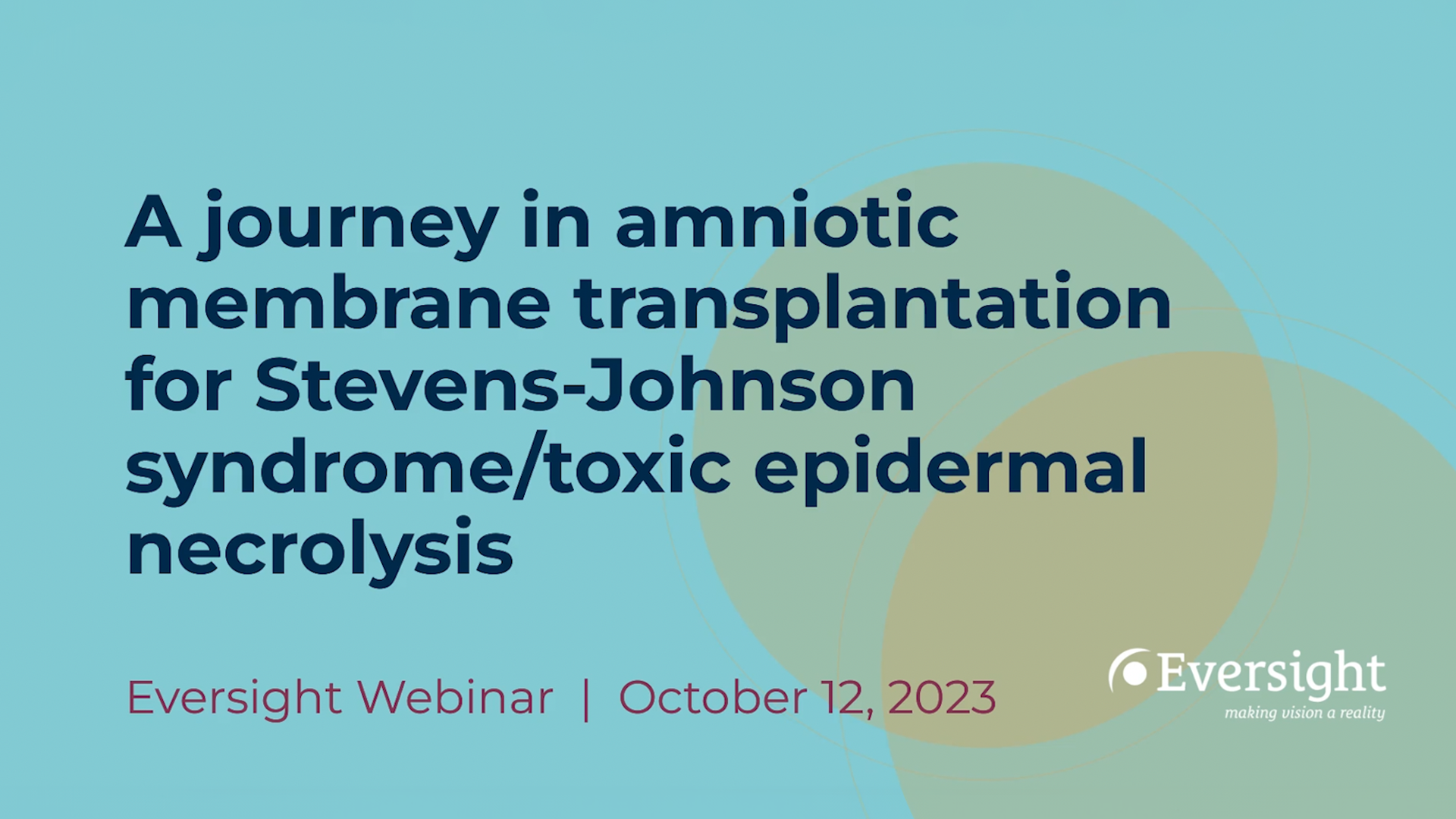By Michael Szkarlat, Partner Development Director
Hajirah Saeed, MD begins the webinar by showing a striking image of a patient with corneal blindness with complete xerosis secondary to Stevens-Johnson Syndrome (SJS). She uses this as segue into her topic: the importance of using amniotic membrane to manage these patients in the acute setting and how to do so.
She reviews the background of SJS including the cost, quality of life burden and its epidemiology. In summary, for such an incredibly rare disease, it has an outsized and substantial healthcare, economic, and quality of life associated costs. SJS can also often lead to a distrust of the healthcare system because it is most often caused by medications.
Dr. Saeed outlines the disease progression from acute to chronic. Early involvement is variable and each of the variable presentations can result in chronic abnormalities. The most significant risk factor for disease progression is disordered eyelid margin anatomy, e.g. entropion, trichiasis, meibomian gland atrophy, etc. The drug causing SJS can also increase risk for severity, especially anti-epileptics.
Dr. Saeed discusses the role of amniotic membrane (AM) in these patients during the acute phase. Although its exact mechanism of action is not fully understood, it acts to reduce eyelid margin keratinization and mitigate more severe ocular complications. Acute management of SJS with AM was first described in 2002, and it was shown that using AM in the first week can reduce chronic ocular disease. In 2011, this was demonstrated again in 10 patients and finally described once more in the only randomized control trial on this incredibly rare disease.
Dr. Saeed’s acute management protocol requires disease grading and outlines treatment with topical medications and AM for each grade. She discusses her preference for using larger sheets (5x10cm) of AM, which are now commercially available. She presents data directly comparing patients who were not managed with this acute protocol vs. those who were. The patients treated acutely showed statistically significant differences in almost every chronic disease outcome. and in visual acuity.
Dr. Saeed describes the protocol for applying AM in these acute SJS patients. In the early days, as with all new procedures, things were more difficult. She describes the transition from suturing small sheets of AM together and then the larger “frankensheet” of AM to the eyelids. Then, BioTissue began producing larger sheets of AM which were easier to use and eliminated tediously suturing smaller sheets together. Finally, a glue protocol was developed that eliminated the need for sutures all together.
Today’s procedure begins with the AM being laid over the eye. Cyanoacrylate glue is used to secure it to the upper lid. A symblepharon ring is used to push the membrane into the superior and inferior fornices. Then the membrane is glued to the inferior lid. This gluing technique performs the same as the previous suturing technique. The updates in the technique over time reduced the procedural time from about an hour to about ten minutes.
Dr. Saeed takes special time to reiterate that ONLY cyanoacrylate glue should be used for this procedure. She also acknowledges the toxicity of this glue and there is a severe risk associated with inadvertently leaving glue on the ocular surface in these already inflamed eyes. Therefore, when securing the membrane to the lid, do so at least 3-4mm above the eyelid margin.
The webinar concludes with an emphasis on the importance of performing this procedure during the first week of disease onset to reduce severe ocular surface disease in the future. Dr. Saeed answers a few audience questions before signing off. Hope to see you all at the next Eversight webinar!
Eversight's free webinars are a great way for you to connect, learn and train digitally with leading ophthalmologists and researchers from around the world. We invite you to RSVP for scheduled webinars and browse our recording library.
Have an idea for a future topic? Interested in receiving timely and relevant information from Eversight? We'd love to hear from you!
Share this Post
About the author
Michael Szkarlat, Partner Development Director

Michael has been with Eversight since 2016 and has recently worked to develop Eversight's educational wet lab programs for EK surgery and a standardized protocol for DALK practice in a wet lab setting. His eye banking experience is rooted in the preparation of corneal grafts and spent nearly five years as Eversight’s Medical Director designee in charge of training clinical team members to prepare corneal tissue for DMEK and DSAEK surgery. In his time at Eversight, Michael has presented at scientific conferences, been involved in clinical research and developed innovations in tissue processing. He was named an IAPB Eye Heath Hero in the innovations category. Michael is passionate about community-based eye banking and honoring the precious gift that is donation. When not at work, he enjoys traveling with his wife and baking artisan sourdough bread.



